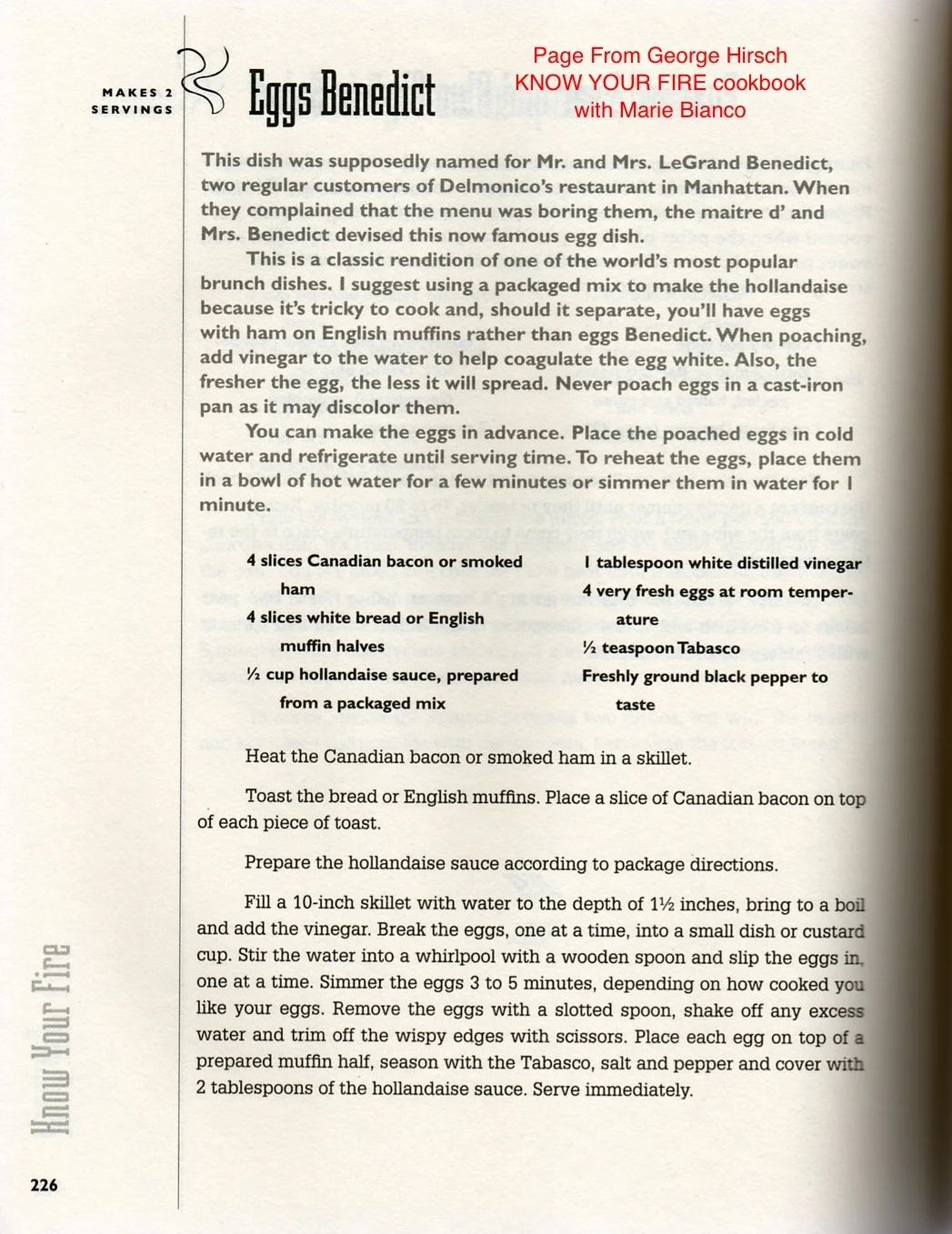Depending on where you are in the world, I believe there is some variation of hush puppies or cornballs cooked in every culture, either savory or sweet - such as the falafel, sorullitos, and festivals. Typically you may think of hush puppies as a BBQ or seafood side dish; originating in the southern region of the USA - tasty comfort food. Yes, I included my own version of it in my Know Your Fire Cookbook. Perfect to serve along with fish and shellfish, such as my ultimate Seafood Chowder from George Hirsch Lifestyle TV series.
Where the name HushPuppies came from:
The name "hushpuppies" is often attributed to southern cooks who would fry some basic cornmeal mixture (possibly that they had been bread-coating or battering their own food with) and feed it to their dogs to "hush the puppies" during cook-outs or fish-fries.
Hush Puppies
chefgeorgehirsch.com | Know Your Fire cookbook George Hirsch Lifestyle
1 cup cornmeal
1 teaspoon baking powder
1/2 teaspoon salt
1/4 teaspoon black pepper
1/2 cup milk
1 egg, lightly beaten
2 Tablespoons melted butter
1 Tablespoon fine chopped parsley
Vegetable oil for frying
* optional suggestions: onions, hot pepper, crisp cooked bacon, finely chopped ham or crab meat
Hush Puppies are great to serve with Beer battered Cod
Combine cornmeal, baking powder, salt and pepper in a medium bowl. Add the milk, add egg and beat with a whisk or fork until the batter is smooth and no lumps remain. Stir in the butter, parsley and set the batter aside for 15 to 20 minutes.
Fill a deep saucepan or deep-fat fryer with 2 to 3 inches of vegetable oil and heat to 360 degree F. Scoop up a scant tablespoon of batter off the spoon or with a small ice cream scoop into the hot fat and when the hush puppies rise to the top in about 1 minute, turn them over and cook until evenly brown, about 2 minutes total. Remove and drain on a wire screen cooling rack. Do not drain on paper towels as they will become soggy. Hush Puppies should always be served piping hot. Serve with a garlic aioli and or sweet chili sauce.











